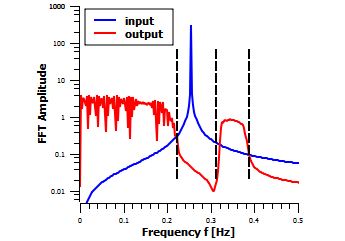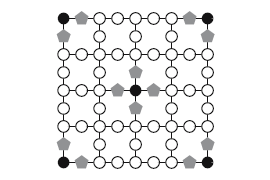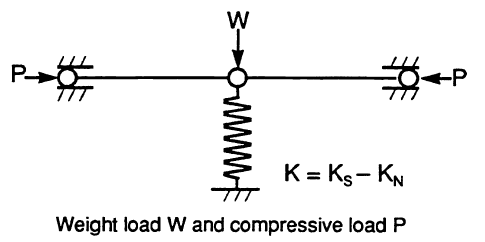Vibration isolation using acoustic band gaps and negative stiffness

Vibrations are often an undesired phenomenon. For example, during the ascent to orbit a launch vehicle subjects its payload to very strong low frequency vibrations. In space, vibrations can also be caused by onboard spacecraft subsystems like reaction-/momentum-wheels and pumps. This can negatively affect the pointing accuracy of space telescopes and earth observation satellites. Here we try to develope an efficient, passive vibration isolation even at low frequencies by combining the principles of acoustic band gaps and negative stiffness mechnisms.
Acoustic band gap

Periodic, discrete elastic structures - called phononic crystals (Fig. 2) - can be produced in such a way that certain frequencies of oscillation cannot propagate (see Fig. 1). This effect can be realized in one, two or three dimensions. The dispersion relation of such an acoustic band gap material shows that some frequencies cannot be carried by any wavevector. In fact there is a maximum frequency - dependent on elastic and inertial properties - above which no frequency is transmitted at all. This could be used to efficiently filter acoustic vibrations and prevent them from reaching a payload. Typically it would be hard to make the stiffness of the material low enough to cut off very low frequencies while still supporting the payload - a solution to this could be a negative stiffness mechanism.
Negative stiffness mechanism

At an unstable equilibrium position the force exerted by a system is in the same direction as the displacement. This is opposed to the way in which a spring works. The unstable equilibrium system can therefore be viewed as a spring with negative stiffness. If a normal spring and a negative stiffness element are applied in parallel the resultant stiffness k = ks + kn can be made arbitrarily small. The equilibrium position of the negative stiffness element is chosen as the position where the weight would be supported by the normal spring alone. Then the mass is statically supported by the spring with stiffness ks while any periodic displacement only couples with k to the payload. If k is close to zero this effectively de-couples the payload from any vibrations of the ground. By combining band gap structures with this negative stiffness mechanism we hope to design a very efficient vibration isolation system.